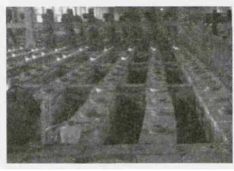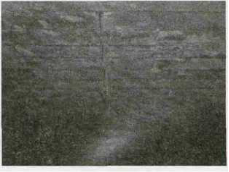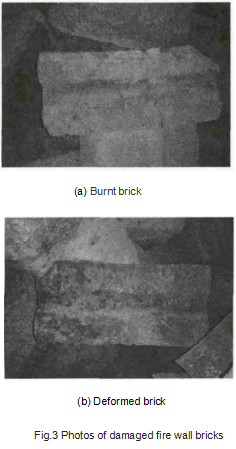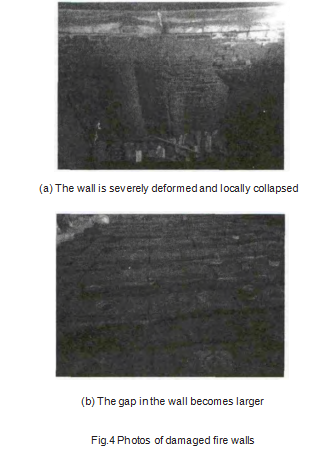Analysis of the causes of deformation and damage of the fire wall

Analysis of the causes of deformation and damage of the fire wall
In order to improve the use cycle of baking furnace flame fire wall, through practical experience combined with theoretical analysis, deformation and breakage of carbon anode baking furnace fire wall are analyzed, get information of Graphite Electrodes used in baking furnace.
1. Overview
A company has 6 sets open anode baking furnaces in two forms, vertical and horizontal, specializing in the production of carbon anodes for aluminum electrolysis. The overhaul period of the baking furnace is usually 8~10 years. Within 4 years after the overall overhaul of the baking furnace, the fire wall has undergone normal maintenance and generally will not be severely deformed and does not require large-scale investment repairs.
In the past three years, the company has completely demolished and overhauled the baking furnace used in the super-overhaul period, and also partially demolished and rebuilt the other severely deformed fire walls of the furnace chamber. However, during the use of the baking furnace, severe regular C-shaped bending and deformation of the fire wall appeared, and some even showed obvious bending or broken cracks less than one year after the masonry (as shown in Figure 1 and Figure 2). The deformation and damage of the fire wall caused great difficulties to the company's carbon anode production organization, product quality, cost control, etc., and greatly affected the process parameter control and smooth operation of the electrolytic cell.

Fig.1 Bending deformation of fire walls

Fig.2 Gap of wall body
2. Analysis of the causes of deformation and damage of the fire wall
According to the regular C-shaped deformation of the wall of the fire wall, the partial indentation of the wall, the through-shaped cracks, the deformation of the clay refractory bricks removed during repairs, etc., combined with the process control during masonry and the actual daily use and maintenance. The reasons for the bending deformation and damage of roasting furnace wall were analyzed from the aspects of technological characteristics, geometric shape of the wall, deterioration trend and the state of waste materials after demolition.
(1) Due to the limitation of the production process characteristics of the product, in the process of using the fire wall, in the process of baking of each batch of carbon anode, the wall must go through the state of natural temperature → gradually rising temperature →1 250 ℃ high temperature maintenance → falling temperature → rapid air cooling → external natural temperature. Such a temperature change cycle process continues to circulate in the production of the baking furnace. This periodic temperature cycle causes the deterioration of the material properties of the fire wall, the cracks and structural deterioration of the masonry, and the reduction of the ability to resist external forces.
(2) Due to the different load-bearing capacity and temperature of the fire wall masonry refractory bricks, different plastic creep and geometric size changes will occur in the high temperature state. In each temperature change cycle, the overall geometric shape of the fire wall expands and contracts with heat, and each layer and brick body undergoes irregular deformation with a slight extension in the horizontal direction and a slight reduction in the vertical direction. This theoretical analysis result has been fully verified from the large number of longitudinal bending and lateral torsion phenomena of refractory bricks removed during the rebuilding of the fire wall (as shown in Figure 3).

(3) Refractory bricks and refractory clay of the fire wall have inherent thermal shock resistance and thermal creep properties, and the properties of refractory materials of different grades are different. In the temperature cycle of the fire wall, the refractory bricks are fatigued and damaged, and the masonry bricks appear micro-cracks and partial damage. In particular, the reinforced bricks and nozzle direct-injection bricks on the part of the fire wall that are subjected to lateral force, due to the direct jet burning effect of the heated flame, fatigue and damage are particularly serious (as shown in Figure 3), and the width of the fire wall is destroyed after long-term operation. The stability of the direction, under the action of the external force of the filler and the carbon anode, formed defects such as the deformation of the fire wall during use, and the indentation, and continued to deteriorate with the prolonged use time and lack of maintenance (as shown in Figure 4(a)) .
(4) The masonry process of the fire wall is not strictly controlled, and some gaps are too small. After the fire wall is built, there is not enough regimen, and the natural volatilization of water takes a short time. The new masonry fire wall was put into use directly, the refractory bricks linearly changed and the moisture quickly vaporized and expanded during the heating process, resulting in inconsistent longitudinal geometric deformation of the wall during use, and the longitudinal gap of the fire wall masonry layer was asynchronously reduced , individual gaps disappear, forming wall masonry bricks longitudinal rigid extrusion and overall elongation, destroying the expansion compensation structure of the fire tunnel wall itself, the original design fire tunnel wall automatic adjustment function disappears, the fire tunnel wall appears deformation, partial structure and shape Destroyed, and continued to deteriorate with the use of time (as shown in Figure 4(b)).
(5) In each temperature change cycle produced by the baking furnace, the fire wall masonry bricks have linear thermal expansion and contraction effects with different temperature gradients. Some masonry layers appear rigidly extruded due to different expansion gaps, under the extrusion action of the filling material in the material box, the wall forms a C-shaped bending deformation; Part of the masonry layer is lengthened due to the vertical gap caused by the different deformation synchronicity. After the periodic mixing action, the fire wall in use is broken or even dislocated and deformed in a large area (as shown in Figure 1, Figure 4(a)).

(6) Asynchronous change of different layers of the same fire passage wall or different parts of the same layer in the operation of baking furnace, resulting in local stress concentration of the fire wall, local relative movement in the same layer or between different layers of the fire wall, and the wall lacing bricks under the action of long-term flame burning and wall deformation, distortion or fracture occurs, the original structure of the wall is destroyed, and the stability of the fire wall deteriorates, which promotes the overall rapid destruction of the fire wall in the later period of operation.
(7) During the operation of the baking furnace, the filling material was sintered on the fire wall and was not cleaned in time. The multi-function crane collided with the wall during the process of loading and unloading the furnace, the artificial furnace was faced with occasional incidents during operation, and damaged fire wall maintenance is not timely and other external factors in time will directly promote the deep deterioration, deformation and even collapse of the fire wall.
(8) The above-mentioned unfavorable factors coexist at the same time and continue to occur periodically, forming a vicious circle, leading to serious deformation and even collapse of the fire wall in the later stage, which seriously affects the carbon anode baking quality, product qualification rate, and unit product energy consumption. To view more technological news contact us.
No related results found








0 Replies